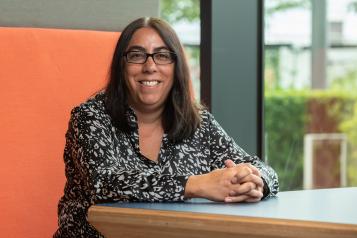Top tips for recruiting volunteers

We spoke to Healthwatch East Sussex to find out more.
The backstory
Following a CQC inspection last year our local NHS Trust received a rating of 'inadequate' across all but one area, we set about creating a Volunteer Task Group to work specifically with us and the Hospital Trust.
The aim of the group is to help the Trust increase involvement of the community in their improvement strategy, and ensure that the Trust is putting patients and carers at the heart of their work.
We wanted to attract people from all walks of life, so we put out our appeal for volunteers using a variety of different channels, including articles on our website and in our local newspapers, radio and TV channels. We also got in touch with our local MPs and Councillors and put a call out via our newsletter and on social media.
As a result, over 80 people from all backgrounds got in touch for more information.
Lots of people want to help improve their local hospital so we attracted a real cross-section of the community. We have everyone from retired clinicians to young people. Whether they are from a health or social care background or not, everyone shares a genuine passion to make a difference.
It’s the first time we’ve done a volunteer recruitment drive of this kind, and we’re really pleased with the impact so far.
Top tips for recruiting volunteers
Here are five things that we think have been the key to our success in getting such a great response:
- Be clear
The purpose of the role should be clearly defined and easy to understand, so it appeals to a wide range of people. Be clear with what you are asking people to do and what you expect from them – for example, how much time they would have to give up and how regularly. Being honest and upfront will reduce the amount of potential drop outs.
- Be persuasive
Think about why this opportunity may be interesting to someone, why should they get involved and what they would get out of the experience and use this in your messaging. We found that the number one reason why people wanted to volunteer with us was that it provides an opportunity to give something back to their community.
-
Be prepared
Identify key dates for induction and training in advance so potential volunteers can make plans and you don’t lose their interest. -
Be creative
Use a variety of different channels to attract your volunteers to ensure you get a diverse range of people. Think about your different audiences and their needs and why this may encourage them to get involved. We targeted specific individuals in the community, for example women using maternity services -
Know your volunteers
Find out more about your volunteers backgrounds; they might have additional experience, skills and connections that they might be willing to use to help your work.
Next steps
We’ve taken on additional support to help us process all our new volunteers and ensure they are trained to visit health and care services and understand what’s working well for patients, and what could be improved.
Once the training is complete the task force will work with the Hospital Trust to help improve people’s experiences.


